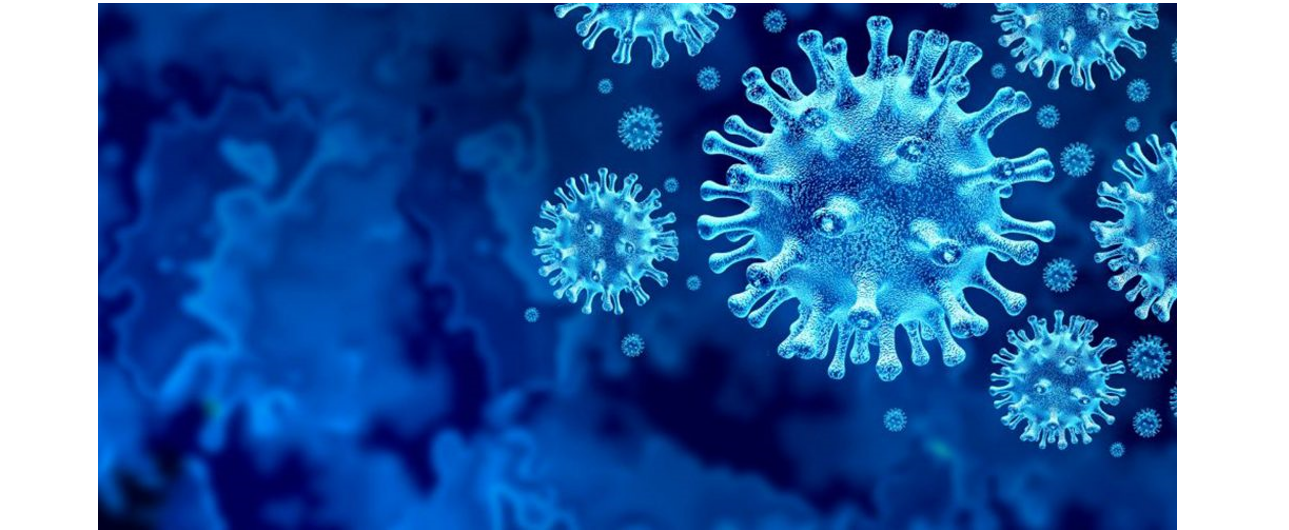SARS-CoV-2 is a beta coronavirus. The genome consists of approximately 30k bp of single-stranded RNA and contains 10 genes encoding 26 proteins, some of which are derived from self-cleavage. In addition, it also encodes an RNA polymerase and related factors that replicate the genome, a proofreading nucleic acid exonuclease, and other nonstructural proteins. The remaining genes encode the structural components of the virus including the surface spike-in (S) protein that binds the host cell receptor, the nucleocapsid protein (N) that wraps the genome, and two membrane-bound proteins (M) including the envelope (E) protein. The number of copies of each viral protein is approximately 300 (S), 1000 (N), 2000 (M), and 20 (E), the diameter of the virus is approximately 100 nm, and the total mass is approximately 1 fg.
Virologists are studying how viruses interact with host cells, how the immune system responds, and how the viral system acts during its life cycle. Mass spectrometry (MS) techniques and "omics" strategies such as proteomics, glycomics, and metabolomics are helping to advance the understanding of viruses and answer these questions.
MS can be used to analyze and detect the protein components of viruses or microorganisms. Protein component analysis is usually carried out after the virus or protein component digestion, or the isolated samples can be directly used as the analyte. Then the protein or its peptide components are analyzed by MALDI or LC-ESI alone or in combination.
The molecular weights of SARS-CoV-2 structural proteins are 141.2 kDa (S consisting of two subunits S1 and S2), 45.6 kDa (N), 25.1 kDa (M) and 8.4 kDa (E). The high copy number of membrane and envelope proteins, including surface spinosin, facilitates MS detection, especially when detected in digested form. The spiked proteins are in trimeric form on the viral surface, where two subunits (S1 and S2) are produced by cleaving S proteins at residues 685-686, each about 70 kDa in size, to catalyze viral attachment to host cell membranes and promote their fusion.
Researchers have focused specifically on the glycosylation distribution of SARS-CoV-2’s surface spinosin proteins. Each S glycoprotein of the virus contains 22 N-linked glycosylation sites, of which about 19 are glycosylated. These oligosaccharides contribute to spike-in protein folding, influence host protease activation, and regulate antibody recognition against the virus. They are involved in virus entry into the host, proteolysis of viral proteins, and recognition and neutralization of viruses by the host immune system.
To address site-specific glycosylation of SARS-CoV-2 S protein and to visualize glycoheterogeneity across the protein surface, S protein can be purified using size exclusion chromatography to ensure the presence of natural protein trimers. The product is then hydrolyzed separately with three different proteases and analyzed by LC-ESI-MS to finally obtain phosphorylation or glycosylation information.
Host cell-virus interactions are also a subject of interest to researchers. The interaction with ACE2-RBD is examined by LC-nESI-MS/MS and molecular dynamics simulations of glycosylation sites. Proteomics strategies have been used to examine changes in host cell translation following SARS-CoV-2 infection.
MS is also widely used in the metabolomics analysis of patients infected by SARS-CoV-2. Metabolomics can provide a better understanding of the underlying pathological processes and pathways, and identify potential diagnostic biomarkers. Combining reversed-phase liquid chromatography and MS, metabolites isolated from the plasma of infected patients can be analyzed by targeted quantitative methods. The analytes are first subjected to derivatization and extraction, and subsequently analyzed by MS in multiple reaction monitoring (MRM) mode, with isotopically labeled samples and other internal standards used for metabolite quantification. MS allows the analysis of many different endogenous metabolites at once, such as amino acids, acylcarnitines, biogenic amines and derivatives, uremic toxins, glycerophospholipids, and sphingolipids.
Reference
Griffin, J. H., & Downard, K. M. (2021). Mass Spectrometry Analytical Responses to the SARS-CoV2 Coronavirus in Review. TrAC Trends in Analytical Chemistry, 116328.
